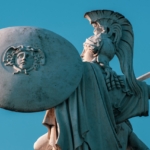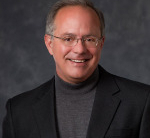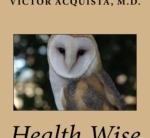WE ARE EACH HEROES AND HEROINES OF OUR OWN STORY

We are always telling stories to one another. It’s part of who we are, how we share information, how we communicate. Did you listen to the news today? Someone told you a story. Did you repeat it to someone else? You told a story to that other person.
How was your day? How did work go? What happened? These are all invitations to tell stories.
The collection, assembly, accumulation of your personal stories amount to the story of your life. It is bookended by your birth and your death. In some cases, there is a prelude as in your parents hoping for a boy or a girl. For many of us there will be an epilogue, a sort of postscript after we have departed. Yet, the beginning of your personal narrative for this lifetime occurs in the middle of a much larger story—your family history, the history of humankind over millennia, the life cycle of the solar system, the galaxy, the entire universe. Your story, your personal narrative is part of this much, much larger story. And, it continues (hopefully for many happy years) as this grand never-ending story unfolds.
Joseph Campbell, the noted mythologist and scholar, helped to uncover the many common elements that comprise the many stories we tell one another about ourselves. Across many different cultures and time periods he researched the big stories about good vs. evil, about encountering and overcoming life’s challenges, about pain and suffering, life and death, about creation and the afterlife. These are the big stories that help humanity to understand its place in the world and beyond. These are the rich stories that underlie our myths, traditions, and cultural heritage that Campbell analyzed and helped us to understand.
Campbell’s best-known work is, The Hero with a Thousand Faces, in which he breaks down the narrative structure of the Hero’s Journey.
If you have read or seen The Wizard of Oz, or The Hobbit, you are familiar with the basic narrative structure. Both of these are classic stories of the Hero’s Journey.
Although Campbell is much more detailed in his analysis of this art form, I simplify this story structure into three parts: a beginning, a middle, and an end.
In the beginning, the Hero or Heroine has a call to action in which they leave the ordinary world they are accustomed to. In Dorothy’s case, she is running away from her ordinary home life when she is swept up by a tornado and is taken to a different world—Oz.
For Bilbo Baggins, Gandalf shows up and encourages him to join a party of dwarves as a burglar on a quest to reclaim dwarven treasures. Although he is perfectly content in his hobbit-hole, he leaves the Shire to embark on an adventure.
That’s the middle part—The Adventure. We all know the adventure part of Dorothy’s trip to Oz, and Bilbo’s journey to encounter Smaug the dragon. Always, the middle part of the Hero’s journey has challenges and mishaps, and setbacks, and other characters along the way that help or hinder the hero or heroine.
The ending of the Hero’s Journey is almost always back to where it all started. Back in Kansas for Dorothy and the Shire for Bilbo. Perhaps Homer’s The Odyssey, a classic hero’s journey, illustrates this entire beginning to ending best.
After leaving his home in Ithaca, then fighting in the Trojan War, Odysseus, the hero, leaves Troy to return to Ithaca, but his journey lasts years with many setbacks and trials before he finally does make it back home. But when he does, he is a changed man.
Always the Hero’s Tale is a journey of transformation. It’s an essential part of this narrative structure. When the protagonist returns at the end, they are changed, transformed in some manner. It was true for Dorothy, and also the case for Bilbo.
This is the story of our lives, each and every one of us is the hero or heroine of our own story, our own personal narrative. Sometimes we are the villain as well. Think of Anakin Skywalker, you Star Wars fans. From good to bad, and back to good at the end in an epic story of redemption. It’s an interesting character arc don’t you think?
Think about your own character arc and the people and circumstances aiding or impeding your progress along your journey. Along the way, often in response to challenges, we are growing, learning, transforming. We are each heroes and heroines of our own story, the story of our individual life’s journey.
In all of our lives, our own personal narratives detail journeys filled with possibilities, and with many twists and turns. Throughout these adventures, given all the unique challenges and opportunities we encounter, how can we each maximize our full potential?
The journey to self-transformation often requires us to confront our flaws and shortcomings as we travel from victim to hero. Our life stories are travelogues of adventure and discovery. Who travels without occasional slips and falls, cuts and bruises? Without damage or trauma? These story elements, these trials, help us to grow and to learn. Expect to accumulate a few or even many scars. That’s life, part of the human experience.
In spite of the challenges so many of us must contend with, despite being damaged, we can still emerge as heroes and heroines as we become the best versions of who we are and what we are capable of becoming. You have a purpose for being here. You are a unique and special person with superhero powers even if you haven’t developed them yet. It’s only natural to have doubts about accomplishing your mission and fulfilling your purpose.
A common challenge of the human condition, that many of us must confront, is to persevere and continue onward despite harboring doubts. It is a challenge to believe in ourselves and what we can achieve. It is a challenge to embrace destiny, discovery, and self-transformation, and it requires courage to face the truth. Rising to face these challenges is heroic.
Embrace your story and your starring role. You are the protagonist. It’s up to you to make your story a great one. After all, you are the hero or heroine. So, enjoy your adventure and do something heroic, like slay some dragons!
Journey well!




